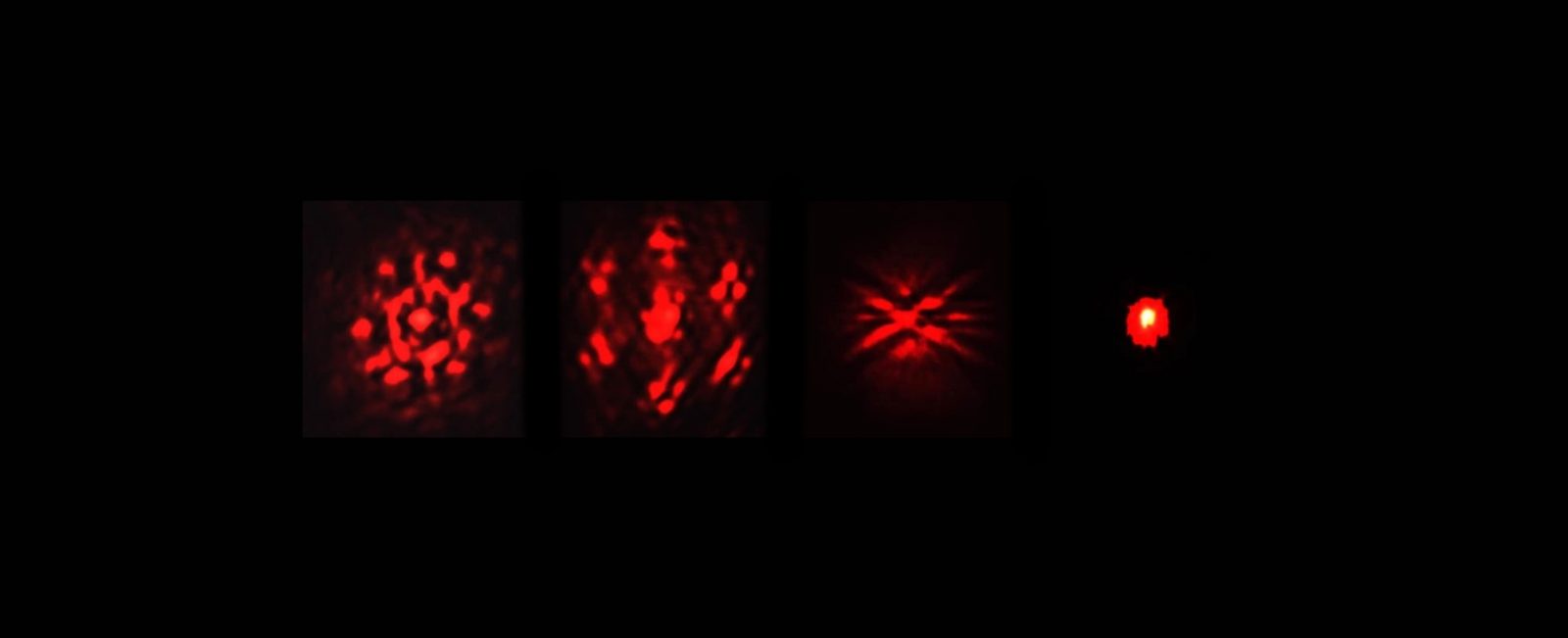A moiré lattice occurs when two periodic 2D patterns are layered on top of each other with a little twist. Since it was proven that two sheets of graphene may run the gamut of electrical characteristics – including superconductivity, magnetism, and Mott insulation – merely by changing the twist angle between the sheets, scientists have been fascinated by moiré patterns in layered crystals.
By interfering two light beams, the researchers were able to “stack” two 2D optical lattices. Prior to interfering, one beam was intercepted by two pre-patterned masks that were rotated in relation to one another. The masks changed the strength and phase of the beam, stamping the patterns onto it like a stencil. The design is then projected onto a crystal of strontium barium niobite. The relative strength of the interfering light beams and the rotation angle between the mask patterns can be used to modify this moiré pattern.
“Our work was inspired by the ‘magic’ angle in bilayer graphene,” Ye says. “We wondered, how will light waves respond if we stack two optical lattices? We’re the first to study the physics behind photonic moiré lattices.”


the angle θ: p2 = 1 in the first, second, and fourth columns, while in the third column p2 = 0.18.
Second row: schematic discrete representation of two rotated hexagonal sublattices. Third row:
measured output intensity distributions for the signal beam at the output face of the crystal. In all
cases p1 = 1.
The researchers looked at how a third light beam, known as the probe, changed when it went through the moiré pattern. The probe retained its initial form with limited angular dispersion at sufficiently large intensity contrasts between the first two moiré beams, a technique known as wave localisation.
Light waves are diffracted and diffused, causing them to spread out like the rays of a flashlight. The capacity to combat this spreading is critical for reducing data loss in optical communications.
Moiré lattices, discovered by Ye and his colleagues, provide a novel technique to localize light in 2D. This is why electrons in twisted bilayer graphene superconduct or freeze in their tracks: flat energy bands. Photons in flat energy bands are crammed into a limited spectrum of energies that only supports modes that withstand diffraction.
Given the similarities in flat-band phenomena between moiré lattices in light and 2D crystals, the researchers understand that their optical system may be utilized as a proxy to explore moiré physics in 2D crystals. Moiré photons roughly obey the Schrodinger Equation, which governs electrons. Optical systems are also less difficult to deal with than 2D crystals, which tend to reorganize into more energetically favorable forms.
Localization and delocalization of light in photonic moiré lattices, Peng Wang, Yuanlin Zheng, Xianfeng Chen, Changming Huang, Yaroslav V. Kartashov, Lluis Torner, Vladimir V. Konotop & Fangwei Ye
Published: December 2019
DOI: https://doi.org/10.1038/s41586-019-1851-6

